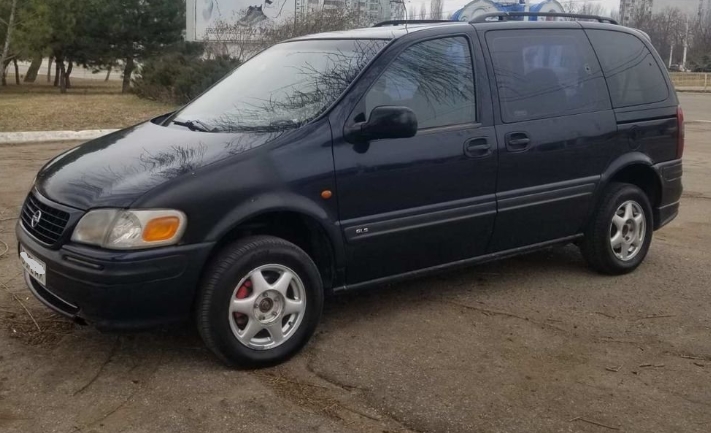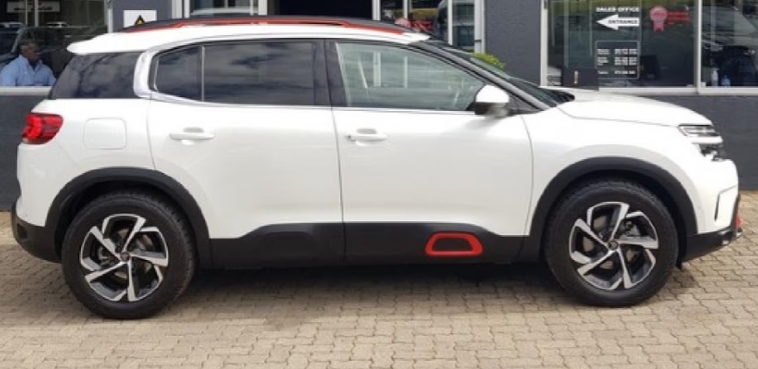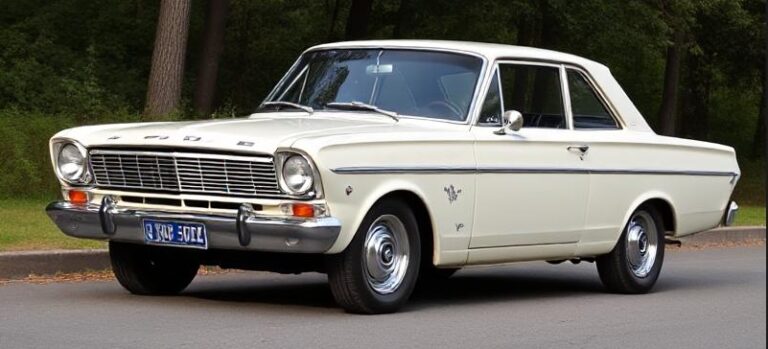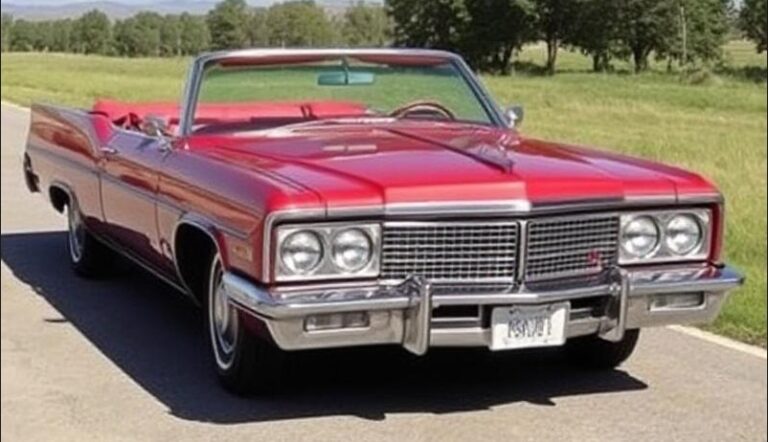The Transatlantic Misadventure: The Brief, Turbulent Evolution of the Opel Sintra
In the annals of automotive history, some vehicles are remembered for their groundbreaking innovation, others for their enduring popularity, and a select few for serving as profound, cautionary tales. The Opel Sintra belongs firmly in the latter category. A product of global corporate strategy, it was a vehicle that attempted to answer a European question with an American solution, resulting in a short, troubled, but ultimately influential chapter for General Motors in Europe. This is the story of its brief evolution, from its ambitious launch to its premature demise.
The Genesis: A Market in Motion (Pre-1996)
The mid-1990s was the golden age of the Multi-Purpose Vehicle (MPV), or minivan, in Europe. The Renault Espace had pioneered the segment, and the Chrysler Voyager had proven that an American concept could find success across the Atlantic. The joint-venture “Eurovans” (Peugeot 806, Citroën Evasion, Fiat Ulysse) and the Ford Galaxy/VW Sharan/SEAT Alhambra trio had solidified the large MPV as a staple for growing families.
Opel, a powerhouse in the European market, had a gaping hole in its lineup. While rivals were capturing the lucrative family market, Opel had no direct competitor. Developing a brand-new vehicle platform from scratch would take years and hundreds of millions of Deutschmarks. General Motors, its American parent company, saw a shortcut. In the United States, GM was preparing to launch its second-generation U-body platform minivans: the Chevrolet Venture, Pontiac Trans Sport, and Oldsmobile Silhouette. The decision was made to adapt this platform for Europe—a classic case of “badge engineering.” This would save immense time and capital, allowing Opel (and its British counterpart, Vauxhall) to enter the MPV fray almost overnight.
The process of “Europeanization” involved more than just swapping badges. Opel engineers were tasked with tuning the suspension for European roads, which are typically narrower, more winding, and favor sharper handling than American highways. The interior materials were adjusted, and critically, a European-centric engine lineup was selected. The exterior received a new grille, lighting units, and bumpers to align it with the Opel design language of the era. Nevertheless, its American DNA was unmistakable in its substantial width, long wheelbase, and overall proportions. In September 1996, the Opel Sintra was officially launched.
The Model Years: A Short and Unsteady Run (1996-1999)
The Sintra’s production life was remarkably brief, lasting less than three full years from its late 1996 launch until its abrupt cancellation in April 1999. Throughout this period, the model range and trim levels remained relatively consistent, with the primary evolution being the crucial addition of a diesel engine partway through its run.
Initial Engine Lineup (1996):
At launch, the Sintra was offered with two petrol engines, one a familiar Opel four-cylinder and the other a potent V6 sourced from Opel’s executive car, the Omega.
2.2i 16V: This was the entry-level engine, an Opel Ecotec (X22XE) four-cylinder unit displacing 2.2 litres. It produced 141 PS (104 kW; 139 hp) and was intended to be the volume seller. Mated to a 5-speed manual gearbox, it offered adequate performance for daily driving, but struggled when the large, heavy vehicle was fully loaded with seven passengers and luggage.
3.0i 24V V6: The flagship engine was the X30XE V6, a smooth and powerful 3.0-litre, 24-valve unit also found in the Opel Omega. It produced a healthy 201 PS (148 kW; 198 hp), giving the Sintra surprisingly brisk performance. This engine was available exclusively with a 4-speed automatic transmission. While it provided effortless cruising, its fuel consumption was prohibitively high for the cost-conscious European market, limiting its appeal primarily to buyers who prioritized performance over economy.
The Crucial Addition (1997):
Opel quickly realised that the lack of a diesel engine was a catastrophic oversight in the European MPV market of the 1990s, where diesel power was becoming dominant for its fuel economy and torque. In late 1997, they rectified this.
2.2 DTi 16V: The much-needed diesel engine was the X22DTH, a 2.2-litre direct-injection turbodiesel. It produced 115 PS (85 kW; 113 hp). While its horsepower figure was modest, its substantial torque was well-suited to moving the Sintra’s bulk. Paired with a 5-speed manual gearbox, this engine transformed the vehicle’s running costs and made it a far more viable proposition for high-mileage families and fleet buyers.
However, its arrival may have been too late to salvage the model’s already faltering reputation.
Trim Levels and Features: Structuring the Range
The Opel Sintra was offered in a clear hierarchy of three trim levels, designed to cater to different budgets and expectations. The same trim structure was mirrored in the United Kingdom for the right-hand-drive Vauxhall Sintra.
- GLS (1996-1999):
The GLS was the entry-point into Sintra ownership. It was the most basic specification, aimed at practicality and value.
Engines: Typically paired with the 2.2i 16V petrol engine.
Exterior: Featured 15-inch steel wheels with plastic wheel covers, black plastic door handles and mirror housings, and unpainted bumpers on early models.
Interior: Upholstered in durable cloth, it came with standard features for the time, including power steering, central locking, and a basic driver’s airbag.
Convenience: Features like air conditioning and electric windows were often optional extras. The seating configuration was for seven passengers, with two front seats, two middle captain’s chairs, and a three-seat bench in the rear. The heavy rear seats had to be physically removed to maximize cargo space—a common but cumbersome feature of MPVs of this era.
- CD (1996-1999):
The CD trim level was the mid-range offering and the intended volume seller, balancing features and cost.
Engines: Available with the 2.2i 16V petrol and, crucially, the 2.2 DTi diesel once it was introduced.
Exterior: Upgraded to 15-inch alloy wheels, body-colored bumpers, mirrors, and door handles, giving it a more upscale appearance. Roof rails were also a standard feature.
Interior: Featured higher-quality velour upholstery and added creature comforts.
Convenience: Air conditioning became standard, as did electric front windows, a better stereo system, and often a second airbag for the front passenger. It represented the sweet spot in the range for the average family buyer.
- CDX (1996-1999):
The CDX was the top-of-the-line, luxury-oriented model, showcasing all the features the Sintra could offer.
Engines: While available with the 2.2i, the CDX was most commonly paired with the powerful 3.0 V6 engine and its mandatory automatic transmission.
Exterior: Often featured more elaborate alloy wheel designs and sometimes subtle chrome accents.
Interior: The cabin was significantly upgraded. Depending on the market and options chosen, this could include leather upholstery, wood-effect trim on the dashboard and doors, and a leather-wrapped steering wheel.
Convenience: Loaded with technology, the CDX included cruise control, a multi-function trip computer, electrically adjustable and heated mirrors, and sometimes electric rear quarter-light windows. It was pitched as a luxurious long-distance tourer, a direct competitor to the high-spec versions of the Chrysler Voyager and Ford Galaxy Ghia.
The Unravelling: Safety, Quality, and Rejection
The Sintra’s evolution was cut short not by a lack of features or engine choices, but by two fundamental flaws: its build quality and its catastrophic safety performance.
European consumers and journalists immediately noted that the Sintra did not “feel” like an Opel. The interior plastics were hard and ill-fitting compared to European-developed rivals. Electrical gremlins and reliability issues, stemming from its American origins, began to surface, tarnishing Opel’s hard-won reputation for dependability.
The death knell, however, came from the European New Car Assessment Programme (Euro NCAP). In 1998, the Sintra was subjected to its independent crash tests, and the results were disastrous. It scored a dismal 2.5 stars (later interpreted as 3 stars under a revised system), with the report highlighting a “high risk of life-threatening injury” for the driver in the frontal impact test due to severe structural deformation. In an era where safety was becoming a primary selling point, and for a vehicle marketed directly at families, this was an unforgivable failure. The Sintra was publicly shamed as one of the least safe vehicles in its class.
Sales, which had been sluggish from the start, plummeted. The Sintra was seen as too big for many European cities, too thirsty in its petrol V6 form, and now, demonstrably unsafe.
.

.
The End and a New Beginning
In a surprisingly decisive move, General Motors pulled the plug. In April 1999, production of the Opel and Vauxhall Sintra ceased. It had lasted on the market for just two years and seven months—an astonishingly short lifespan for a mass-market vehicle.
The failure of the Sintra, however, was not in vain. It taught Opel and GM a critical lesson: a global platform could not simply be re-badged for Europe without a fundamental understanding of local tastes, quality expectations, and safety standards. The shortcut had proven to be a costly dead end.
Out of the ashes of this failure rose its successor, the Opel Zafira. Launched in 1999, the Zafira was everything the Sintra was not. It was based on the compact and successful Opel Astra platform, making it smaller and more agile. It was designed from the ground up by Opel in Germany, specifically for European needs. Most importantly, it introduced the revolutionary “Flex7” seating system, which allowed the third-row seats to fold flat into the floor instead of needing to be removed. This single innovation changed the MPV game.
The Zafira became a runaway success, a segment leader, and a multi-generational triumph for Opel. The brief, troubled evolution of the Opel Sintra thus serves as a vital footnote in automotive history—a transatlantic gamble that failed, but in doing so, paved the way for one of Europe’s most successful family cars.







